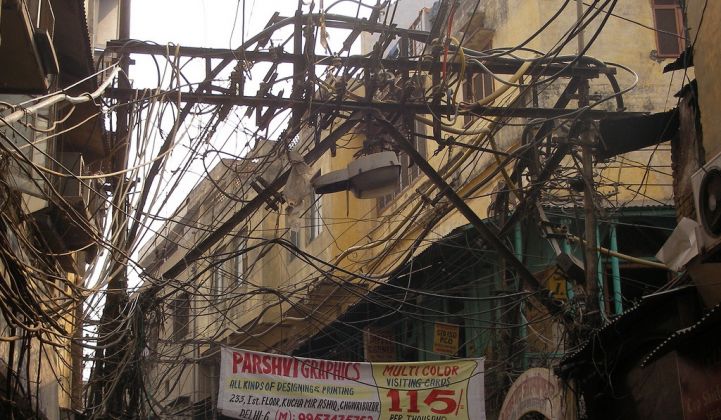One by one, India’s state governments are starting to roll back the curtain on the country’s first big round of smart grid investments.
Earlier this week, several Indian state governments reportedly laid plans for smart grid projects, ranging from smart meter rollouts in the Indian territories of Puducherry and Bangalore, to a nationwide deployment of phasor measurement devices across the nation’s five independent grid systems -- a first step in synchronizing them to share power -- at an estimated cost of 239 rupees crore ($48 million).
And on Tuesday, Siemens announced an 18.5 million euro ($24.3 million) contract to provide SCADA and distribution management systems for eight cities, including Mumbai, in the Indian state of Maharashtra. The German smart grid giant will install more than 4,000 remote terminal units (RTUs) at substations and along the medium-voltage grid, and link customer care and mapping systems to it to do things like detect faults, direct outage repairs -- and spot power theft.
Get ready for more such announcements to take place, if the government’s 5-billion-rupee (nearly $100 million) proposal for eight smart grid pilot projects comes through. The plan announced last month calls for about 500 million to 600 million rupees ($10 million to $11.5 million) apiece, and about 14 state utilities are expected to bid projects.
India has its share of tech giants to take part in the government’s big smart grid push, including the likes of Infosys and Wipro. But it’s also a target of foreign competitors like Siemens, ABB, General Electric and Schneider Electric, which bought Indian cabling company SmartLink Network Systems last year. On the IT side, Cisco is doing a big “e-city” green-field development with Wipro called Lavasa City outside Mumbai, and IBM launched a big smart grid planning analytics system for the government’s Bureau of Energy Efficiency last year.
India is the second most populous nation on earth, and about half of its people don’t have reliable access to the grid at all. (That makes the country an interesting target for distributed power and microgrid projects, by the way.) The grid India does have is run-down, and it’s also subject to a stress that North America and Europe lack: power theft, or “non-technical losses” in utility jargon.
Theft can be the single biggest problem that utilities in developing nations face -- Brazil’s utilities say theft adds up to 20 percent or more of total delivered power -- and smart meters have theft prevention as a first priority. Indeed, India’s government named demand management and “reduction of aggregate technical and commercial losses” -- i.e., better efficiency and less energy theft -- as priorities for the projects it wants to fund.
ZPryme projects the Indian smart grid market could reach $1.9 billion by 2015, giving a sense of how far the country has to go to upgrade the grid it has before it takes the next steps into smart grid technology. But it also has plans to add 20 megawatts of solar power to its grid over the next 10 years, which could add stresses to the country’s grid infrastructure. Solving that problem is going to require a lot more smart grid features than anti-theft smart meters.



